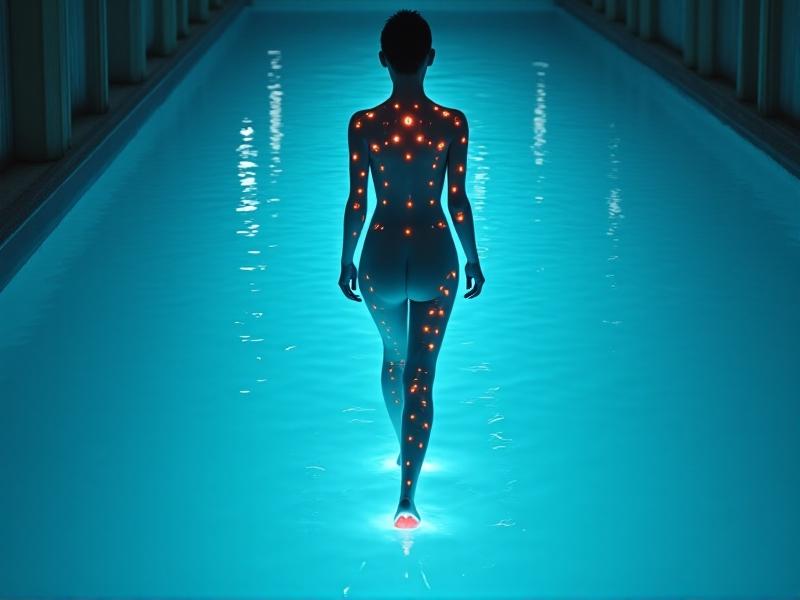360-Degree Immersion Treadmills
Introduction to 360-Degree Immersion Treadmills
Imagine stepping onto a treadmill that not only allows you to walk or run but also transports you to a virtual world where every step feels real. This is the promise of 360-degree immersion treadmills, a cutting-edge technology that blends physical exercise with virtual reality (VR). These treadmills are designed to provide a fully immersive experience, allowing users to explore virtual environments while engaging in physical activity. Whether you're jogging through a serene forest, navigating a bustling cityscape, or even traversing alien planets, 360-degree immersion treadmills make it possible to escape the confines of traditional workout routines.

How 360-Degree Immersion Treadmills Work
At the core of 360-degree immersion treadmills is a combination of advanced hardware and software. The treadmill itself is typically a circular or omnidirectional platform that allows users to move in any direction. Sensors embedded in the platform track the user's movements, translating them into the virtual environment. Paired with a VR headset, the system creates a seamless experience where the physical and virtual worlds align perfectly. The software driving these treadmills is equally sophisticated, featuring realistic graphics, responsive controls, and dynamic environments that adapt to the user's actions. This synergy between hardware and software ensures that every movement feels natural and intuitive, making it easy to forget you're on a treadmill at all.

The Benefits of 360-Degree Immersion Treadmills
One of the most significant advantages of 360-degree immersion treadmills is their ability to make exercise more engaging and enjoyable. Traditional treadmill workouts can quickly become monotonous, but these immersive systems transform exercise into an adventure. They also offer mental health benefits, as the virtual environments can reduce stress and promote relaxation. From a fitness perspective, these treadmills provide a full-body workout, engaging muscles that might not be activated during standard treadmill sessions. Additionally, they are highly customizable, allowing users to adjust the intensity, terrain, and even the virtual setting to suit their preferences. This versatility makes them suitable for a wide range of users, from casual exercisers to professional athletes.

Applications Beyond Fitness
While 360-degree immersion treadmills are primarily marketed as fitness equipment, their applications extend far beyond the gym. In the field of rehabilitation, these treadmills are being used to help patients recover from injuries or surgeries by providing a safe and controlled environment for physical therapy. They are also gaining traction in the gaming industry, where they offer a new level of immersion for VR games. Beyond entertainment and health, these treadmills are being explored for training purposes in fields like military, aviation, and emergency response, where realistic simulations can enhance preparedness and decision-making skills. The potential for this technology is vast, and as it continues to evolve, its applications are likely to expand even further.
Challenges and Limitations
Despite their many advantages, 360-degree immersion treadmills are not without challenges. One of the primary concerns is cost, as these systems are significantly more expensive than traditional treadmills, making them inaccessible to many consumers. Another issue is space, as the omnidirectional platforms require a larger footprint than standard treadmills. Additionally, while the technology is impressive, it is still in its early stages, and there are limitations in terms of the realism and responsiveness of the virtual environments. Motion sickness is another potential drawback, as some users may experience discomfort when the physical and virtual movements don't align perfectly. Addressing these challenges will be crucial for the widespread adoption of this technology.
The Future of 360-Degree Immersion Treadmills
The future of 360-degree immersion treadmills is incredibly promising. As technology advances, we can expect these systems to become more affordable, compact, and realistic. Innovations in VR and artificial intelligence (AI) will likely enhance the user experience, making the virtual environments even more immersive and interactive. There is also potential for integration with other technologies, such as haptic feedback systems, to create a truly multisensory experience. As the benefits of these treadmills become more widely recognized, they could revolutionize not only the fitness industry but also fields like education, entertainment, and healthcare. The possibilities are endless, and the journey has only just begun.
Conclusion
360-degree immersion treadmills represent a bold step forward in the fusion of technology and fitness. By combining physical exercise with virtual reality, they offer a unique and engaging way to stay active while exploring limitless virtual worlds. While there are challenges to overcome, the potential benefits and applications of this technology are immense. As we look to the future, it's clear that 360-degree immersion treadmills have the power to transform how we think about exercise, entertainment, and beyond. Whether you're a fitness enthusiast, a gamer, or simply someone looking for a new way to stay active, this innovative technology is worth keeping an eye on.








